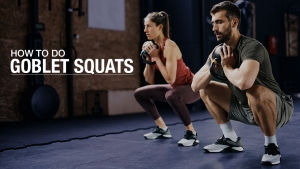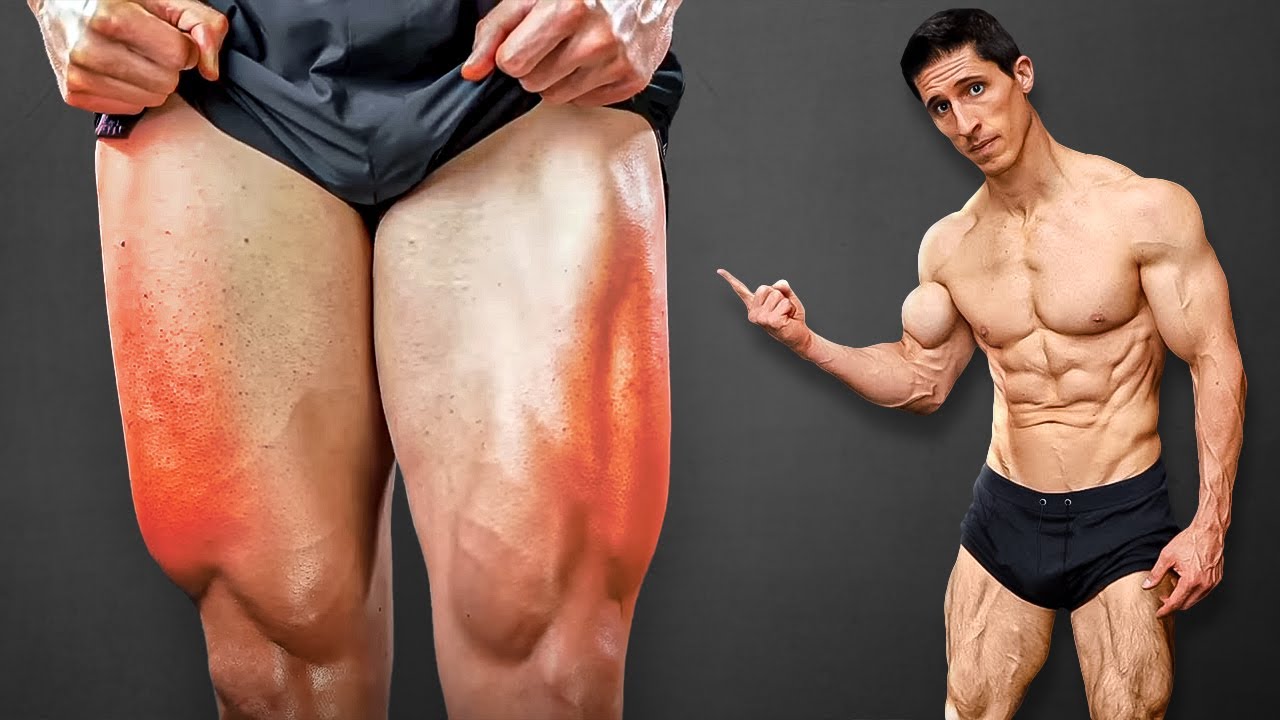
ULTIMATE GUIDE TO QUAD WORKOUTS
Guys, let’s shift our focus to the front of your thighs today—your quadriceps.
If you check out most quad workouts, you’ll probably notice a lot of emphasis on Leg Presses, Traditional Back Squats, and the Walking Lunge week after week.
These are great, but if that’s all you’re doing, you might be missing out on maximizing your quad strength and function.
What’s more, there are a ton of leg exercises, some great and some really bad.
After reading this, covering the best of the best quad exercises, you may want to get rid of a few of the ones you’re doing now.
In this article, I’m going to introduce you to a quad workout that doesn’t just build muscle but also enhances your performance and aids in injury prevention.
But before we dive into the workouts, let’s get a solid understanding of the anatomy of the quadriceps, explore their true function, and discuss why your current quad exercises might not be as effective as they could be.
Get ready for a comprehensive guide that will change your approach to quad workouts!
Here’s what this guide to quad workouts includes:
ANATOMY OF THE QUADRICEPS
Meet your quadriceps femoris, or quads, which are the powerhouse of your lower body.
This formidable group of four muscles dominates the front of your thigh, each contributing uniquely to your ability to perform everything from basic walking to explosive jumps.
In this section, I’m going to break down the complex anatomy of your quadriceps, giving you the inside scoop on the primary function of each muscle.
This knowledge will empower you to train smarter, optimizing your leg workouts for peak performance and minimizing the risk of injury.
True to its name, the quadriceps muscle comprises four distinct parts or heads:
VASTUS MEDIALIS

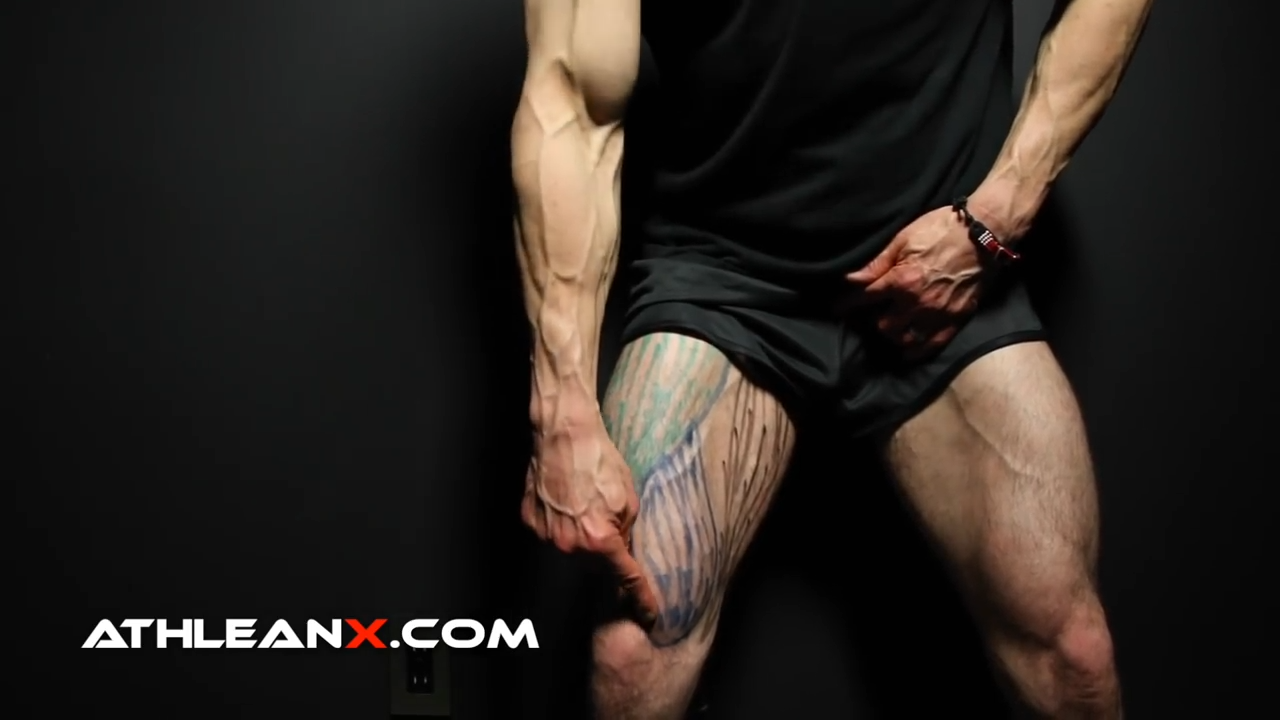
Positioned on the inner side of your thigh right above the knee, the Vastus Medialis isn’t just another muscle—it’s a key player in the quadriceps group.
Often referred to as the “teardrop muscle” because of its shape, this muscle is essential for powering and stabilizing your knee.
It primarily functions to extend the knee, which is important for basic actions like standing up, walking, and kicking.
The Vastus Medialis also plays a role in keeping your kneecap aligned, helping to safeguard against injuries and ensuring your legs function like a well-oiled machine during high-intensity activities and heavy lifts.
VASTUS INTERMEDIUS

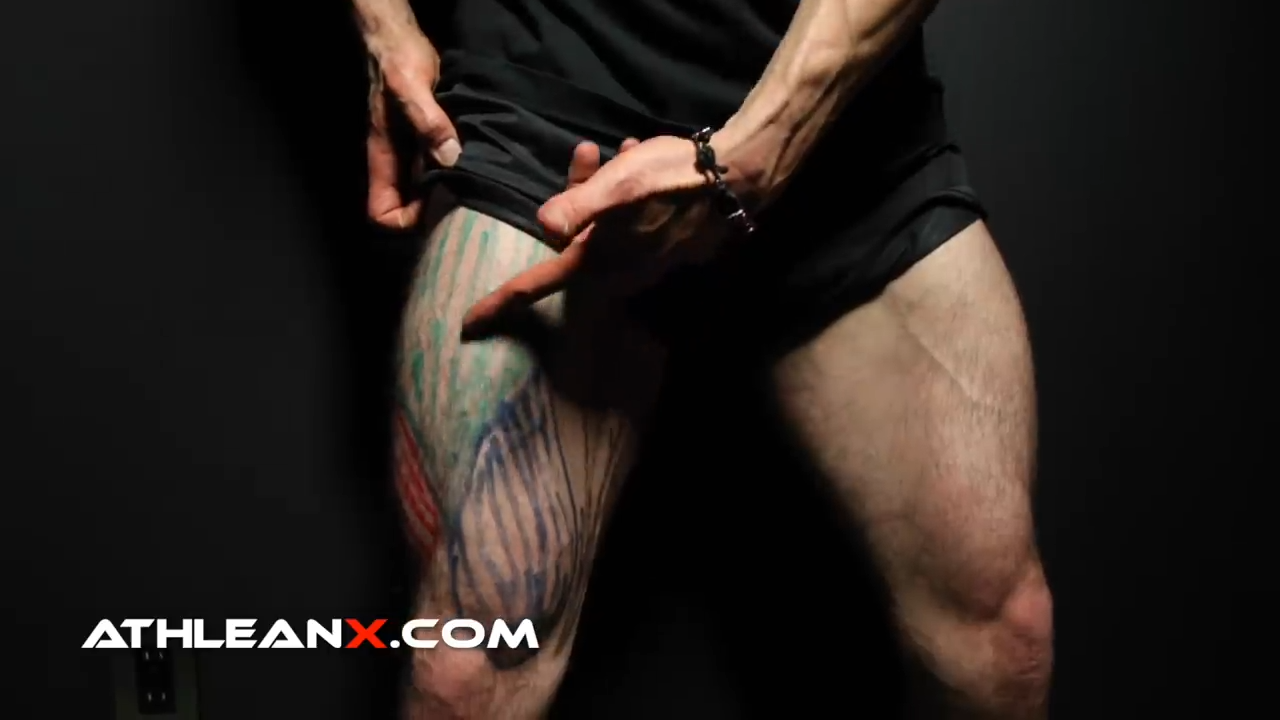
Tucked away beneath its more visible counterparts, the Vastus Intermedius might be out of sight, but it’s definitely not out of action.
This muscle sits deep in the center of your quad, hidden beneath the Vastus Lateralis and Medialis.
Despite its stealthy placement, the Vastus Intermedius is a powerhouse when it comes to its role in knee extension.
It works tirelessly behind the scenes, helping you straighten your knee, which is essential for virtually every lower body movement—from sprinting to squatting.
This muscle ensures that your knee joint moves smoothly and powerfully, giving you the strength and stability needed for peak athletic performance.
VASTUS LATERALIS

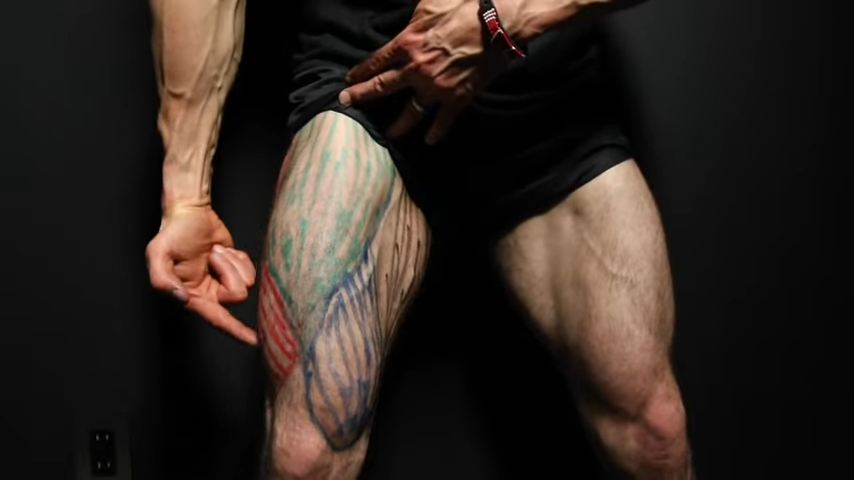
Dominating the outer part of your thigh, the Vastus Lateralis is robust and substantial, running along the lateral side of your leg.
It plays an important role in knee extension, just like its quadriceps counterparts, but with a focus on stabilizing and strengthening the outside of the knee.
Whether you’re blasting through a sprint, powering up a steep climb, or loading up a heavy squat, the Vastus Lateralis is crucial for generating forceful movements and maintaining alignment and stability in the knee.
It’s the muscle that athletes rely on for explosive power and endurance, making it a key target in any serious leg training program.
RECTUS FEMORIS

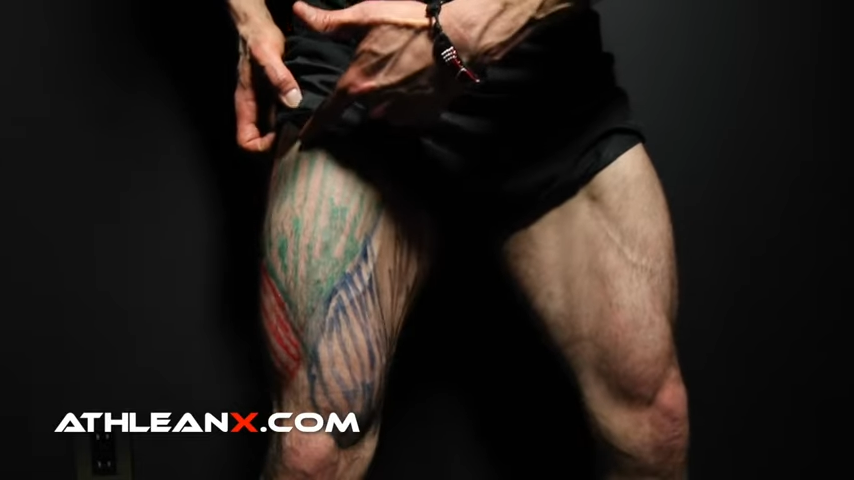
Sitting at the front and center of your thigh, the Rectus Femoris is unique among the quadriceps muscles.
Why?
It’s the only one that stretches above the hip, anchoring itself to the pelvis.
This strategic positioning allows it to serve dual functions—it’s not just about knee extension.
The Rectus Femoris is crucial for hip flexion, lifting your thigh and driving it forward.
This makes it indispensable for activities that require high knee lifts, like sprinting, jumping, and kicking.
Its dual role in both knee and hip movement means it’s a key player in creating powerful, dynamic motions that can elevate your performance across a range of sports and exercises.
THE PROBLEM WITH ONLY FOCUSING ON THE SQUAT
If you look at most Leg Day Workouts, you’ll notice one exercise that always seems to be front and center: the traditional Barbell Squat.
Focusing on some squat variations like Pistol Squats, Box Squats, and the Heel-Elevated Back Squat might not be doing you any favors either.
Let’s dive into why making squats the cornerstone of every leg workout might not be giving you the quad gains or the functional benefits you’re after.
INCOMPLETE QUAD ACTIVATION
When it comes to Squats, yes, they are one of the best. But here’s the catch:
Even with proper squatting form, they often don’t fully activate the entire quad muscle group, especially the Rectus Femoris.
Why?
Because this muscle also plays a critical role in hip flexion, which isn’t maximally challenged by traditional squats.
Let me be clear: When performed correctly, the Barbell Squat does activate all four heads, but it doesn’t target the Rectus Femoris as much as the other three heads.
If you’re looking to develop those almighty quads symmetrically and effectively, incorporating diverse movements that target these muscles from various angles is non-negotiable.
NEGLECTING THE POSTERIOR CHAIN
Heavy emphasis on squats tends to pump up the front side of your legs but can leave your posterior chain – the hamstrings, glutes, and calves – lagging behind.
This imbalance not only hampers your aesthetic but can also throw your body mechanics off-kilter, increasing the risk of injuries.
Mix it up with exercises like Deadlifts and Bulgarian Split Squats to keep those gains balanced and your body in check.
HITTING A PROGRESS PLATEAU
If Squats are your go-to, your body’s going to adapt, and soon, those gains will stall.
The rule of thumb here is variation.
Challenge your quads with different stimuli—change your foot position, play with your squat depth, or switch from a Barbell Back Squat to Dumbbell Step-Ups.
Keep your muscles guessing and growing by altering the stimuli, ensuring continuous progress and muscle growth.
OVERUSE RISKS
Squatting repeatedly, especially heavy squats in the squat rack, puts enormous stress on your knees.
Without mixing up your routine, this can lead to overuse injuries, achy knees, or worse, sidelining you from more than just leg day.
Regularly incorporating a range of effective quad exercises reduces repetitive strain and helps safeguard those crucial knee joints.
LACK OF FUNCTIONAL VARIETY
As a performance coach, I need to talk functionality and mobility.
Squats are great, but they don’t cover the dynamic, multi-directional movements you perform outside the gym.
Sports, daily life, and various activities demand more than what squats alone can offer.
Adding Lunge variations, Step-Ups, and Split Squats can enhance your functional fitness, improving your performance both in and out of the gym.
BEST EXERCISES FOR THE QUADS
To build resilient, powerful quads, you want to integrate a mix of quad-focused exercises into your routine.
Diverse training methods not only develop strong quads but also bolster overall leg strength and body balance, enhancing both your athletic capabilities and everyday functional movements.
Here are some of the best exercises for the quadriceps that you can start using today:
HEAVY RESISTANCE BIKE

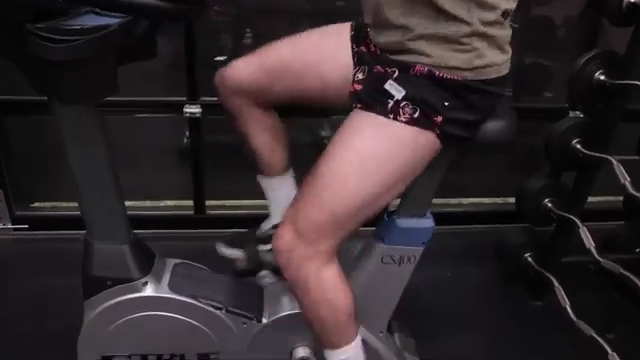
HOW TO DO HEAVY RESISTANCE BIKE:
- Begin by setting up your bike on a sturdy, elevated surface or on a resistance trainer that allows for adjustable resistance settings. Ensure that the bike is stable before starting your workout.
- Increase the bike’s resistance to a challenging level that mimics the effort needed to pedal up a steep hill. This heavy resistance is key to stimulating muscle growth in the quads.
- Sit on the bike and ensure that your feet are securely placed on the pedals. Adjust the seat and handlebars so that your body is in a central position, allowing for efficient power transfer without straining your back.
- Start with a 5-minute warm-up at a moderate pace to increase your core body temperature and prepare your muscles and joints for the intense session ahead.
- Begin cycling with the heavy resistance set. Maintain a steady pace, focusing on pushing down hard with each pedal stroke. Keep your upper body relaxed and your grip firm but comfortable.
- Continue pedaling for a set duration or until you can maintain the intensity. Sessions can last anywhere from 20 to 30 minutes, depending on your fitness level and training goals.
- After completing the intense part of your workout, reduce the resistance and pedal at a slow pace for 5 to 10 minutes to help your muscles recover and to prevent stiffness.
- Post-exercise, perform stretches to help alleviate any muscle tightness, focusing on the quads, calves, and hamstrings.
WHAT MAKES IT EFFECTIVE: When we talk about building muscle, it’s not just heavy weights that get the job done. Even lighter external loads can pack a serious punch when you ramp up the volume, and that’s where techniques like Heavy Resistance Bike or Hill Riding come into play as a killer workout for your quads. Take a look at the cyclists in the Tour de France for instance. Despite having a more slender upper body, these athletes develop incredibly powerful and massive lower bodies, especially their quads. This muscular growth is driven by the high volume of miles they put in, which is a prime example of how consistent quad exercises and challenging body weight movements can lead to significant muscle gains.
DUMBBELL DROP SQUAT

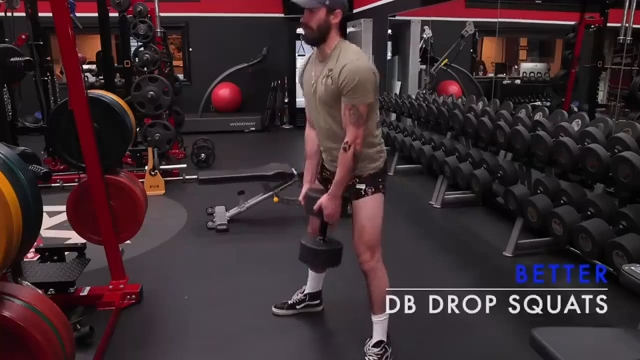
HOW TO DO THE DUMBBELL DROP SQUAT:
- Place a dumbbell on the floor between your feet. Stand with your feet slightly wider than shoulder-width apart.
- Start by bending your knees while driving your hip flexors back, just like you’re about to sit on an invisible chair. Make sure to keep your chest up and your spine in a neutral position to protect your back as you descend into the squat.
- Reach down and grasp the dumbbell with both hands. Ensure your grip is firm.
- Keeping your back straight and core engaged, lift the dumbbell by straightening your legs and hips to return to a standing position. Keep the dumbbell close to your body as you lift.
- Reverse the motion to slowly lower the dumbbell back to the starting position on the floor, maintaining control and good posture throughout the movement.
- If you don’t have a dumbbell, you can also use a heavy weight plate.
WHAT MAKES IT EFFECTIVE: The Dumbbell Drop Squat is one of my favorite exercises for beginners with weak quads. It takes away all the guesswork. If you simply hold the dumbbell by its end and let it go where it wants to go, which is straight down, it’s going to actually biomechanically fix the amount of hip flexion and knee flexion that you need to contribute to the exercise to do it properly.
GOBLET SQUAT

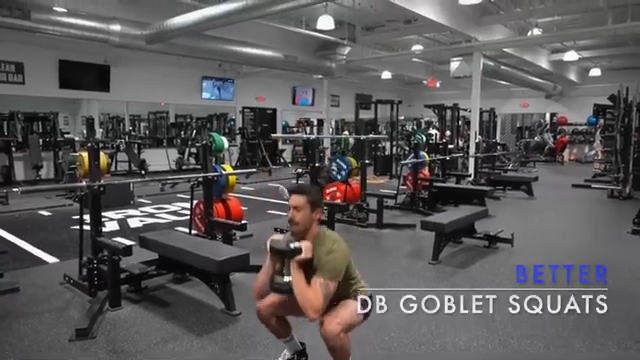
HOW TO DO THE GOBLET SQUAT:
- Stand with your feet about shoulder-width apart. This foot position provides a stable base for compound moves, enhancing human body balance and core strength.
- Hold a dumbbell vertically in front of your chest, both hands clasping the top end of the dumbbell at upper chest height. Keep your elbows pointing down. Holding the weight close to your chest helps maintain an upright torso, preventing your chest from collapsing forward.
- Brace your core to prepare for the movement. This activation is crucial as it stabilizes your upper body and prevents unwanted motion, protecting your spine and enhancing the safety of the exercise.
- Initiate the squat by bending your knees and pushing your hips back. Lower your body until your thighs are at least horizontal, keeping your knees directly above your feet. Keep your foot flat on the floor.
- Throughout the movement, keep your chest upright and your back straight. This posture control is essential for effectively targeting the quads and minimizing the risk of injury.
- Drive through your heels to return to the starting position, maintaining the weight at your chest. This upward movement should be powerful and controlled, engaging your quads, glutes, and core.
- Perform the desired number of repetitions. It’s recommended to incorporate 2-to-3 minutes between sets to allow your lower body muscles to recover, ensuring each set is performed with maximum efficiency.
WHAT MAKES IT EFFECTIVE: This fantastic exercise packs on size even at higher rep ranges as long as you’re taking it to failure. Even if you do a heavy Goblet Squat – let’s say 100 pounds and you can do 25 repetitions to failure – you’ve got a great option for building your quads.
LEG EXTENSIONS

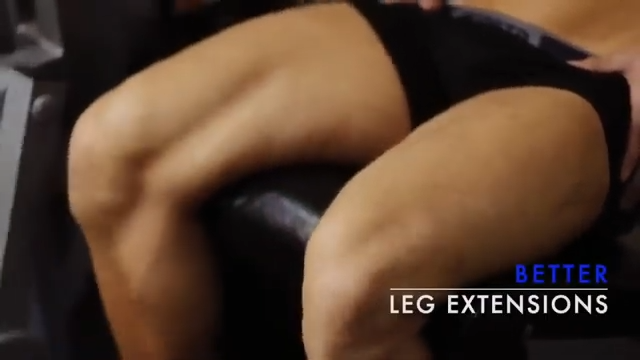
HOW TO DO LEG EXTENSIONS:
- Start by adjusting the Leg Extension machine to fit your body. The seat should be positioned so that when you sit, your knees align with the machine’s pivot point. Adjust the backrest so that you can sit upright with your back fully supported.
- Sit down on the machine with your back against the pad and look for the ankle pad attachment. Position your legs under the ankle pad, ensuring it rests comfortably on the lowest part of your shins, just above your feet. This setup helps maintain muscular tension effectively throughout the exercise.
- Select an appropriate weight from the stack. Start with a lighter weight to ensure proper form and gradually increase as you become more comfortable with the movement.
- Grip the hand bars on the sides or the seat to stabilize your upper body.
- Slowly extend your legs, pushing against the ankle pad, until your knees are straight but not locked. Ensure your thighs and hips remain in contact with the seat and pad at all times.
- Pause at the top of the movement when your legs are fully extended. This is the stretched position where your quads are fully engaged.
- Control the weight as you slowly lower it back to the starting position.
- Keep your movements smooth and controlled. Avoid jerky motions which can lead to achy knees or actual knee pain. Ensure your body remains in a central position with your chest upright throughout the exercise to maximize safety and effectiveness.
- Perform the exercise for a recommended 8-12 repetitions per set, maintaining consistent quad exercises throughout your routine. Include a 2-to-3 min rest between sets to allow for muscle recovery.
WHAT MAKES IT EFFECTIVE: If you’re seeking quad isolation moves that specifically target quad hypertrophy and allow for progressive overload, Leg Extensions are a prime choice. However, this exercise isn’t suitable for everyone. Individuals with existing knee problems may find Leg Extensions problematic because they place significant force and constant tension on the patella, particularly at the peak of the extension. Those with patellar tracking issues are especially likely to experience discomfort and potential exacerbation of their condition.
LEG PRESS


HOW TO DO LEG PRESSES:
- Start by positioning yourself in the Leg Press machine, ensuring your back and head are securely against the padded support. Adjust the seat to ensure that when your feet are placed on the footplate, your body is centered. This correct setup is crucial for keeping your alignment proper and minimizing the risk of injury.
- Position your feet parallel, flat, and shoulder-width apart on the footplate. You can adjust the height to vary which part of the legs are targeted. A lower foot position focuses more on the quads, while a higher position engages the glutes and hamstrings.
- Before starting, ensure the safety bars are in place to prevent the weight from being lowered too far. This is crucial for preventing injuries and maintaining muscular tension throughout the exercise.
- Disengage the safety bars and slowly lower the platform by bending your knees. Continue until your knees are bent at a 90-degree angle, ensuring that your knees do not extend beyond your toes to keep the tension on your legs and off your knee joints.
- Push the platform away by extending your legs, focusing on engaging your quads, hamstrings, and glutes. Keep the motion smooth and controlled without locking your knees at the top of the movement.
- Perform the desired number of repetitions. Between sets, take a 2-to-3 min rest to allow your muscles to recover, ensuring each set is performed with maximum effort and proper form.
WHAT MAKES IT EFFECTIVE: Leg Presses can help you build bigger and resilient quads but be sure to lower your feet on the platform. As your feet get a little lower, you’re going to get more knee flexion, which is going to help you to target those quads more effectively.
DUMBBELL STEP-UP

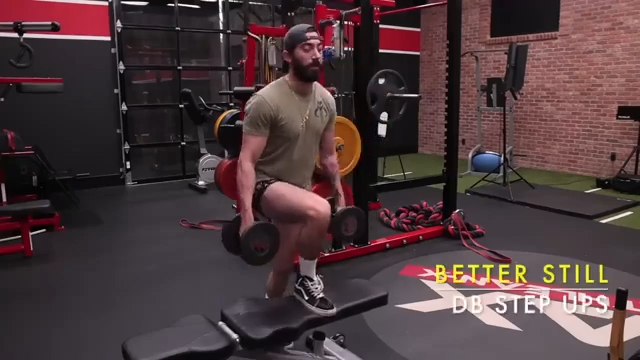
HOW TO DO THE DUMBBELL STEP-UP:
- Begin by choosing a pair of dumbbells that are appropriate for your fitness level. This will help ensure that you maintain body balance and muscular tension throughout the exercise.
- Use a sturdy bench or elevated surface that is secure and at a height where, when you step on it, your knee is bent at a 90-degree angle. This height is crucial to target the right muscle groups effectively and safely.
- Stand upright with your feet straight and hip-width apart, holding a dumbbell in each hand at your sides. Keep your arms straight and let the dumbbells hang naturally.
- Lift your left knee and foot and place it firmly on the bench. Push down firmly with your heel to elevate your body, drawing your right foot up to join your left on the bench.
- Keep your chest upright and your tight core engaged to maintain stability and prevent any unwanted movement.
- Step down with the right foot, followed by the left, returning to the original starting position.
- Complete the desired number of repetitions with your left leg, then switch to your right leg to ensure balanced muscle development.
- Keep your movements controlled, especially when stepping down, to protect your knee joints and maintain tension in your leg muscles. Always ensure the bench or elevated surface is stable to prevent slipping or tilting.
- If you’re just starting out, this is one of the great bodyweight quad exercises for beginners.
WHAT MAKES IT EFFECTIVE: Dumbbell Step-Ups are an effective exercise and all-around lower-body challenge. They’re great for targeting the quads, especially when you keep your posture upright throughout the exercise. What’s more, you’re also getting a good eccentric overload on the quads as you slowly lower yourself down on every repetition.
SLED PUSH / PULL

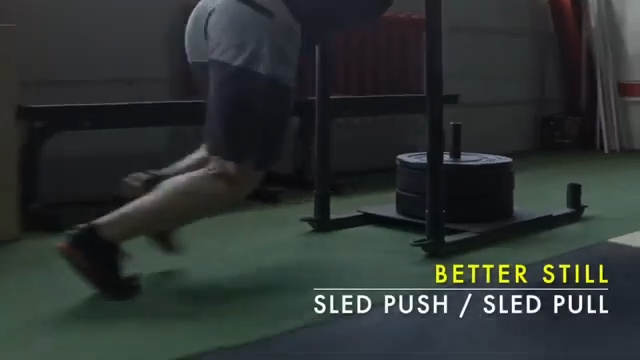
HOW TO DO THE SLED PUSH/PULL:
- Begin by loading the sled with an appropriate weight. Adjust the weight to match your fitness level and training goals, ensuring that you can maintain body balance and core body temperature during the workout.
- Stand at the sled with your feet hip-width apart. For the push, place your hands on the sled at chest height. Ensure your arms are slightly bent and your body leans into the sled, forming a straight line from your head to your ankles.
- Engage your core and keep your back straight.
- Drive through your legs, pushing off the balls of your feet to move the sled forward.
- Maintain a consistent pace, focusing on powerful leg extensions to propel the sled.
- Push the sled over a predetermined distance that challenges your lower body strength and endurance without compromising form.
- Switch to the Pull: Attach a rope or harness to the sled if it is not already equipped.
- Face away from the sled, grasping the rope or straps with both hands.
- Lean back, bending your knees slightly, and walk or run backwards, pulling the sled towards you.
- Similar to the push, focus on strong, steady steps to maximize engagement of your quads, hamstrings, and glutes.
- Always ensure the path is clear of obstacles and the surface is appropriate for sled training to prevent injuries. Use built-in safety bars or similar mechanisms if available to adjust the sled’s resistance safely.
WHAT MAKES IT EFFECTIVE: Competitive athletes who regularly perform this exercise will attest to its effectiveness, not only in building noticeable size but also in enhancing overall athleticism. The absence of an eccentric load, similar to cycling, works in their favor by allowing for greater exercise volume. This makes it particularly suitable for athletes aiming to strengthen their bodies in a more functional manner.
DUMBBELL SPANISH SQUAT


HOW TO DO THE DUMBBELL SPANISH SQUAT:
- Start by selecting an appropriate weight for the dumbbells and a resistance band strong enough to challenge your terminal knee extension without compromising your form.
- Loop the resistance band just behind your knees. This placement will provide additional resistance as you perform the squat, particularly targeting the effectiveness of the exercise on the quadriceps as in leg extensions.
- Grab a dumbbell in each hand and let them hang naturally at your sides.
- Position your feet shoulder-width apart, grounding them firmly to maintain balance throughout the movement.
- Tighten your core and lift your chest as you start to descend, bending your knees and shifting your hips backward.
- Keep your knees in line with your toes and pushing against the resistance of the band.
- Lower yourself until your thighs parallel to the ground, keeping your balance and control in check.
- Drive through your heels to return to the starting position, extending your knees and hips simultaneously.
WHAT MAKES IT EFFECTIVE: The Dumbbell Spanish Squat is an effective variation of the traditional squat that incorporates a resistance band to enhance knee stability and strength.
DUMBBELL TKE SPLIT SQUATS


HOW TO DO THE DUMBBELL TKE SPLIT SQUAT:
- Secure a resistance band around a sturdy anchor point at knee height. Loop the other end around the knee of your front leg.
- Stand in a staggered stance, one foot forward and the other back, as if you were taking a large step. The distance between your feet should allow you to lower your body comfortably without losing balance.
- Hold a dumbbell in each hand by your sides to add weight and increase the intensity of the squat.
- Engage your core and maintain an upright chest to ensure proper posture throughout the movement.
- Lower your body by bending both knees until the back knee nearly touches the ground. Your front thigh should aim to be parallel to the ground, and your back knee should be aligned vertically under your hip.
- As you descend, focus on keeping the front knee in line with your foot, resisting the pull of the band. Avoid letting the knee of your front leg buckle inward by actively pushing against the band’s resistance.
- Drive through the heel of your front foot to return to the starting position.
- Ensure that your knees do not extend beyond your toes to avoid unnecessary stress on the knee joints.
- Perform the desired number of repetitions on one leg, then switch to the other leg and repeat, ensuring equal training on both sides.
WHAT MAKES IT EFFECTIVE: The benefit of this exercise is that it allows you to concentrate your efforts on one leg at a time to enhance hypertrophy in weaker areas, while achieving terminal knee extension and resisting it in a more functional manner than using a fixed machine, which I believe is superior.
HACK SQUAT

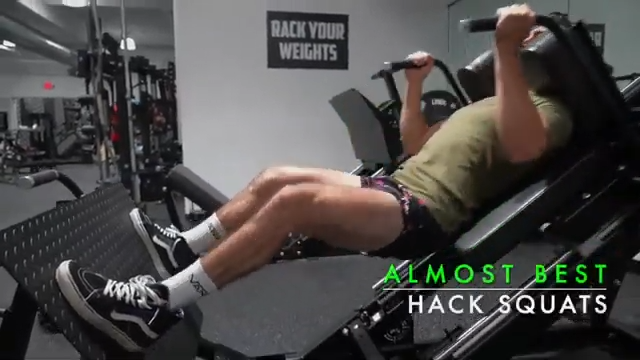
HOW TO DO THE HACK SQUAT:
- Adjust the machine’s pad and footplate to fit your height. The pad should comfortably support your shoulders and back when you lean against it.
- Step onto the machine’s footplate and place your back against the padded support. Position your shoulders under the shoulder pads.
- Your feet should be shoulder-width apart with toes slightly pointed outward. The exact positioning of your feet can vary slightly based on comfort and specific muscle targeting.
- Gradually bend your knees and descend by gliding along the machine’s track, ensuring that your back and head remain firmly against the pad during the entire motion.
- Lower until your thighs are at least horizontal, careful to keep your knees from moving past your toes, which helps maintain correct form and minimizes stress on the knee joints.
- Press through your heels to extend your legs and return to the starting position. Focus on using your quads, glutes, and hamstrings to drive the movement.
- Keep your core engaged and your back flat against the pad throughout the exercise. This helps to stabilize your body and prevent injury.
- Avoid locking your knees at the top of the movement to keep tension on the muscles and protect your joints.
WHAT MAKES IT EFFECTIVE: The Hack Squat machine offers the advantage of an adjustable foot pad that allows you to angle your body and achieve the dorsiflexion necessary for a more natural squatting motion.
DUMBBELL BULGARIAN SPLIT SQUAT

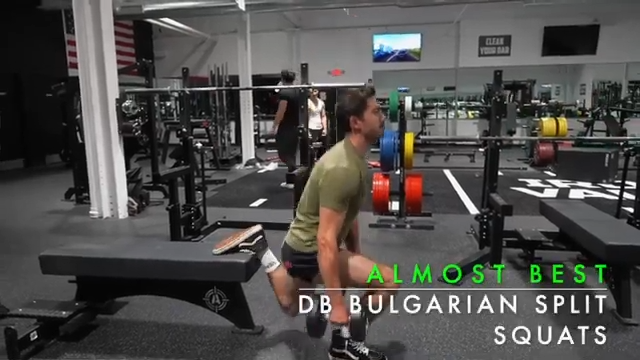
HOW TO DO THE DUMBBELL BULGARIAN SPLIT SQUAT:
- Choose a pair of dumbbells that suit your current fitness level. Start with lighter weights if you are new to this exercise.
- You will also need a bench or a sturdy platform. The surface should be about knee height.
- Stand facing away from the bench, about two feet in front of it.
- Hold a dumbbell in each hand with your arms hanging naturally at your sides.
- Extend one leg back and place the top of your foot on the bench. This is your rear leg.
- Keep your other foot firmly on the ground, ahead enough so that as you lower into the squat, your knee aligns directly over your ankle. This is your front leg.
- Lower your body by bending the knee of your front leg and dropping your hips down towards the ground. Maintain an upright posture and ensure your core is tight during the entire motion.
- Lower yourself until your front thigh is horizontal to the floor (or as close as you can get), making sure your front knee does not extend past your toes.
- Press through your front heel to extend your knee and hip to return to the starting position.
WHAT MAKES IT EFFECTIVE: Some benefits of this unilateral exercise include the ability to target one leg at a time to correct muscle imbalances without the strain of bearing weight across your back. Additionally, it allows you to handle heavy loads safely. Moreover, if you have back issues, this exercise offers extra protection by minimizing posterior pelvic tilt at the bottom of the movement, as you can keep one leg elevated behind you.
HIGH BAR BACK SQUAT

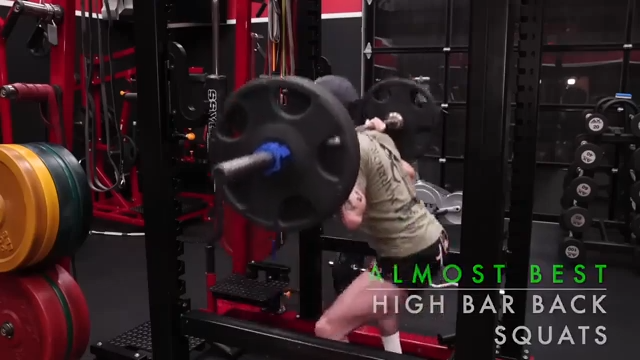
HOW TO DO THE HIGH BAR BACK SQUAT:
- Start by setting the loaded barbell on a squat rack at about chest height. When you load the barbell onto your shoulders, position it higher up on your traps, just below the neck. This is the ‘high bar’ position, which differentiates it from the low bar squat where the bar rests further down the back.
- Step under the bar and place your feet roughly shoulder-width apart, with your toes slightly turned out.
- Engage your core stability and lift the bar off the rack by standing up straight. Take one or two steps back to clear the rack, setting your stance firmly.
- Begin the descent by breaking at the knees and hips simultaneously. Keep the weight distributed evenly through your feet, not allowing your heels to come off the ground. Lower yourself down, keeping the bar over the mid-foot, until your hips are slightly below your knees. Ensure your chest stays up and your back remains neutral to avoid undue stress on the spine.
- Drive up through your heels, pushing the floor away. Your knees should move in line with your toes, not inward, as you rise.
- Keep the core tight and the torso upright to support the bar as you return to the starting position.
- Take a deep breath and hold it at the start of each rep to increase intra-abdominal pressure, which supports your back. Exhale forcefully as you pass the most challenging part of the lift.
WHAT MAKES IT EFFECTIVE: When you put the barbell up high on your upper traps, what you get is a more vertical positioning of your body as you descend into the squat, that causes the quads to be more engaged.
BARBELL REVERSE LUNGE

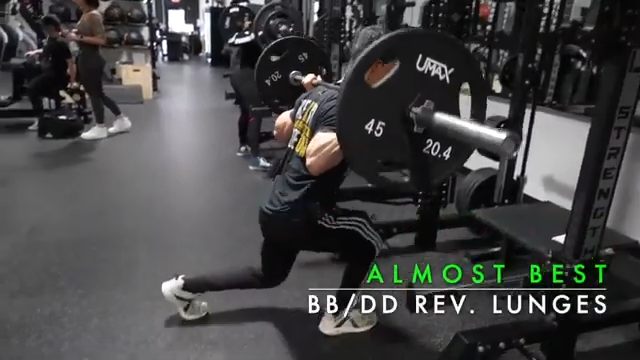
HOW TO DO THE BARBELL REVERSE LUNGE:
- Start by placing a barbell across your upper back, just below the neck. Position your hands slightly wider than shoulder-width on the bar to maintain stability.
- Stand upright with your feet hip-width apart. Ensure the barbell is securely positioned and balanced before you begin the movement.
- Take a controlled step backward with one leg, far enough that when you descend, your front thigh becomes parallel to the ground, and your back knee nearly touches the floor.
- Descend by bending both knees while ensuring the front heel remains firmly planted on the ground and the back toe is pointed, aiding in maintaining balance.
- Make sure your front knee stays directly above your front foot and does not extend past your toes to avoid undue stress on the knee joint.
- Press through the heel of your front foot and use the strength of your front leg to return to the starting position.
- Maintain an upright posture and engage your core throughout the movement to help stabilize your body.
- Repeat the movement with the opposite leg, alternating legs for the desired number of repetitions.
WHAT MAKES IT EFFECTIVE: The advantage of this exercise is that you can load it heavily, provided you’re confident in doing so. If balance is a concern, remember to step not just back but also out to widen your base of support, thereby enhancing stability and reducing balance issues.
BARBELL FRONT SQUATS

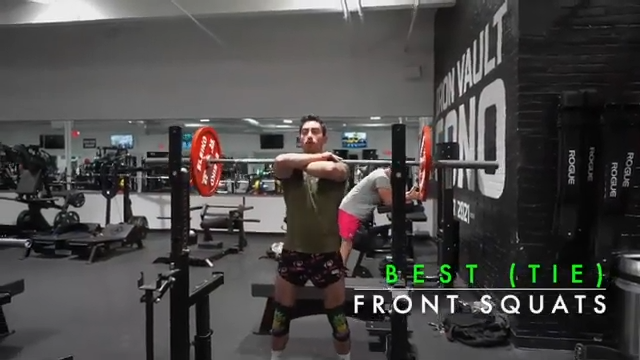
HOW TO DO THE BARBELL FRONT SQUAT:
- Begin by setting the barbell on a squat rack at about chest height. Use a clean grip by placing your hands just outside your shoulders on the bar, elbows high, and palms facing up, or use a crossed-arm grip with your arms crossed and hands on top of the bar to secure it against your shoulders.
- Lift the bar out of the rack and let it rest against your clavicles and the front shoulders. Keep your elbows as high as possible to create a ‘shelf’ with your shoulders for the bar to rest on. This helps to keep the bar stable and secure throughout the exercise.
- Step back from the rack and position your feet about shoulder-width apart with toes slightly pointed out. This stance will provide stability during the squat.
- Begin by taking a deep breath and bracing your core. Maintain a straight back and an upright torso as much as possible.
- Initiate the movement by bending your knees and hips to lower your body. Make sure your knees align with your toes and avoid them collapsing inward.
- Descend until your thighs are at the same level as the floor or lower, maintaining flat heels throughout the movement.
- Press through your heels to drive your body back up to the starting position, exhaling as you ascend.
WHAT MAKES IT EFFECTIVE: The Front Squat is the optimal squat variation for specifically targeting and building the quads. This is because holding the bar in front shifts more of the load onto the quadriceps and away from the glutes and hamstrings.
BELT SQUATS

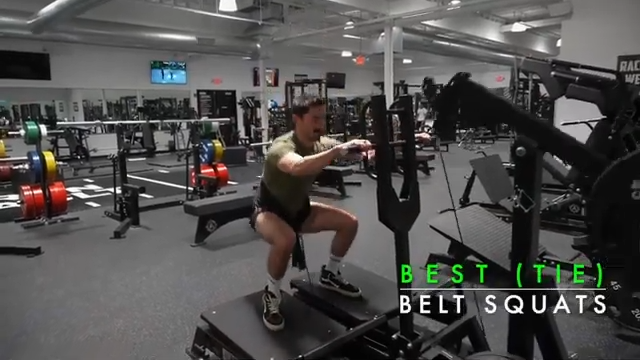
HOW TO DO THE BELT SQUAT:
- Secure the weightlifting belt around your waist. Ensure it’s tight enough to stay in place but comfortable enough not to restrict movement or breathing.
- Step up onto the platform of the belt squat machine. Stand with your feet about shoulder-width apart. Adjust your stance as needed for balance and comfort.
- Begin by slowly lowering your body as if performing a traditional bodyweight squat. Bend at the knees and hips, pushing your buttocks backward while keeping your chest up and your gaze forward.
- Lower yourself until your thighs are horizontal, making sure your knees remain in line with your toes without extending past your feet.
- Drive through your heels to push back up to the starting position. Focus on using your legs to lift the weight rather than relying on momentum.
- Keep your core engaged and your back straight throughout the movement to maintain stability.
WHAT MAKES IT EFFECTIVE: What’s great about this exercise is that it mimics the natural squat position of the Drop Squat, allowing you to center your mass optimally for the lift, and it lets you load weights comparable to what you might use in a back squat.
WORST EXERCISES FOR THE QUADS
Now that we’ve explored the best exercises for building your quads, let’s shift gears and discuss the exercises that might not be as effective or safe for targeting this crucial muscle group.
Here are my picks for the worst quad movements you want to avoid:
SISSY SQUAT

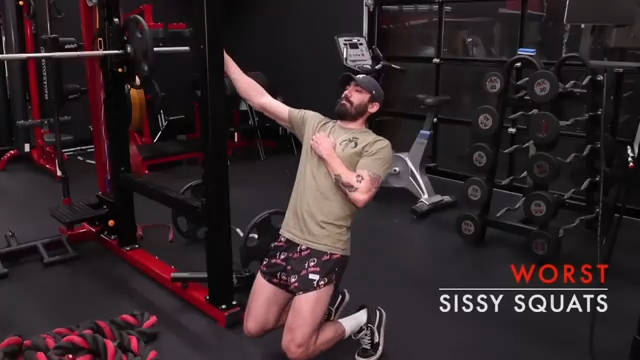
HOW TO DO THE SISSY SQUAT:
- Stand upright and take a narrow stance with your feet about hip-width apart. For stability, you can hold onto a fixed object like a squat rack or a sturdy chair. This support is especially useful as you learn the movement.
- Lift your heels off the ground, balancing on the balls of your feet. This is your starting position.
- Slowly lean back as you bend your knees and let your body descend towards the ground. Keep your thighs and upper body in a straight line as you lean back, which means your body should move downwards at an angle, not straight down.
- Your knees will travel forward beyond your toes, which is typical for this exercise but should be done cautiously to avoid undue stress on the knees.
- Continue lowering yourself until your knees are fully bent and you cannot go lower without losing balance or control. The degree of descent will depend on your lower-body power, strength, and flexibility.
- Engage your quadriceps to pull yourself back up to the starting position, reversing the motion you made on the way down.
- Try to maintain balance and control throughout the movement, using your arms and holding onto the support if needed.
WHAT MAKES IT THE WORST: Despite its potential for strengthening the patellar tendon when approached with caution and proper technique, the conventional Sissy Squat often ranks among the less favorable quad exercises. Typically, it’s performed with weights like a plate held across the chest to aim for hypertrophy—a goal it seldom achieves effectively. This method can overly stress the knees without delivering the desired muscle growth, making it crucial to progress slowly and deliberately if choosing to include this exercise in your routine.
SMITH MACHINE SQUAT

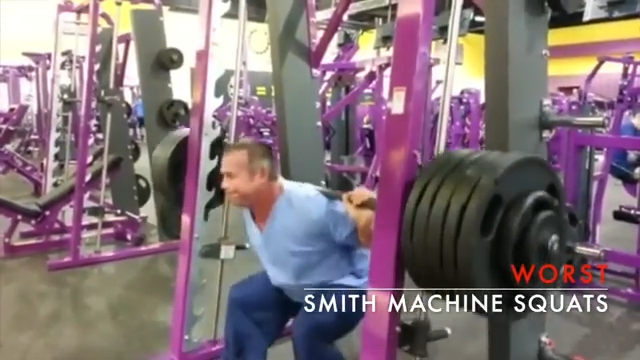
HOW TO DO THE SMITH MACHINE SQUAT:
- Start by setting the bar height on the Smith Machine so that it’s at about your shoulder level when standing.
- Step under the bar so that it rests across your shoulders near the base of your neck. Depending on your comfort, you may choose a high bar (on the traps) or a low bar (across the upper back) position. Make sure the bar is evenly balanced across your back.
- Position your feet about shoulder-width apart with toes slightly pointed outward. The exact positioning of your feet can be slightly forward from under the bar, unlike in free weight squats. This is because the fixed path of the Smith Machine can alter your body’s natural movement slightly.
- Unlock the bar by rotating it, usually by lifting it up slightly and then twisting. Ensure you’re in a stable standing position with your core engaged.
- Inhale and brace your core, keeping your chest up and your back straight.
- Begin by bending your knees and slowly lowering your body as if sitting back into a chair. Make sure to keep your knees in line with your feet, and don’t let them bow inward.
- Lower yourself until your thighs are parallel to the floor or lower, depending on your flexibility and comfort.
- Drive through your heels and mid-foot to stand back up, keeping your body upright and your core tight.
WHAT MAKES IT THE WORST: The Smith Machine Squat often falls short as an effective quad exercise due to its restriction on natural body movements. While a vertical bar path is ideal for squats, the Smith Machine enforces this path in a rigid manner that doesn’t accommodate individual biomechanical differences. People vary in leg and torso lengths, which influences how they naturally descend into a squat. The Smith Machine forces everyone to conform to the same movement pattern, bending at identical points simultaneously, which can disrupt natural joint and body mechanics, leading to inefficient training and potential injury.
Guys, if you’ve been stuck using basic Leg Presses and Squats to bulk up your quadriceps, it’s time to elevate your routine.
The traditional methods alone won’t maximize your quad development, but the diverse quad exercises we’ve discussed will certainly do the trick!
Easily integrate one or two of these powerhouse movements into your existing workout to really target those quads.
And if you’re still piecing together a solid lower-body workout, we’ve got you covered!
Check out our ATHLEAN-X programs to find the perfect fit for your fitness goals and level.

- Focusing solely on squats can lead to an imbalance, underdeveloping the hamstrings, glutes, and calves, and potentially increasing injury risk.
- Frequent heavy squatting increases stress on the knees, which can lead to overuse injuries and keep you out of the gym.
- Here are the best quad exercises that will help you add variety to your routine, helping you see better results:
- Barbell Front Squats: Directly loads quads, enhancing activation and focusing on the lower thigh.
- Dumbbell Bulgarian Split Squat: Isolates each leg for intense quad development and muscle symmetry.
- Leg Press: Handles heavy weights with controlled motion, specifically targeting quads.
- Sled Push / Pull: Builds functional muscle through dynamic quad-focused movements.
- High Bar Back Squat: More upright posture targets quads more specifically than low bar squats.
- Belt Squats: Reduces spinal load, allowing heavy weights focused solely on quads.
- Dumbbell TKE Split Squats: Incorporates terminal knee extensions to strengthen quads and improve joint health.
- Hack Squat: Machine-based exercise that safely manages heavy loads for intense quad activation.
- Dumbbell Spanish Squat: Uses resistance bands to add tension and emphasize quads during squats.
- Dumbbell Step-Up: Elevates a basic movement to enhance quad engagement through added resistance.
- Leg Extensions: Isolates quads (upper thighs) to sculpt muscles by focusing on peak contraction.
- Barbell Reverse Lunge: Increases quad tension by stepping back, enhancing each rep’s effectiveness.
- Dumbbell Drop Squat: Explosive movement that significantly increases quad tension.
- Goblet Squat: Front-loaded resistance deepens the squat, stressing quads more intensely.
- Heavy Resistance Bike: Builds quad endurance and size through high-resistance cycling.
QUAD WORKOUTS FAQS
When looking to construct the ultimate quad workout, incorporating a variety of exercises that target the quads from multiple angles and resistance levels is key.
This strategic approach not only builds impressive quad muscles but also boosts overall leg strength and enhances body balance.
Here’s a sample workout involving my picks for the best quad exercises. Perform 2 to 3 sets of 8 to 12 repetitions for each of the following exercises.
- Dumbbell TKE Split Squats
- Dumbbell Bulgarian Split Squat
- High Bar Back Squat
- Barbell Front Squats
- Belt Squats
If you're gunning for the title of the number one exercise for quads, it's a neck-and-neck race between Front Squats and Belt Squats.
Front Squats demand a high level of athleticism and body control, placing a significant load directly on the quads by positioning the bar at the front of your body.
This setup not only targets the quads intensely but also requires core strength and stability, making it a top-tier exercise for overall lower body development.
On the flip side, Belt Squats on a belt squat machine offer a unique advantage.
They allow you to load up the weight without putting stress on your spine, focusing all that intensity right where you want it: on your quads.
This makes it an ideal choice for those looking to isolate and blast their quads while sparing their back, proving that both these exercises deserve a shared spot at the top of your leg day lineup.
Absolutely, five exercises are more than enough to build muscle mass in your quads, especially when you pick the right ones!
With the variety of everyday movements available, you can target the quadriceps from every angle, ensuring comprehensive development and function.
Take your pick from staples like the Heavy Resistance Bike and the Goblet Squat, which focus on endurance and functional strength.
Add in some Dumbbell Drop Squats for explosive power and depth.
Don't forget the precision of Leg Extensions and the sheer intensity of the Leg Press.
Here are the best exercises for stronger quads that you can choose from:
- Barbell Front Squats
- Dumbbell Bulgarian Split Squat
- Leg Press
- Sled Push / Pull
- High Bar Back Squat
- Belt Squats
- Dumbbell Tke Split Squats
- Hack Squat
- Dumbbell Spanish Squat
- Dumbbell Step-Up
- Leg Extensions
- Barbell Reverse Lunge
- Dumbbell Drop Squat
- Goblet Squat
- Heavy Resistance Bike
These exercises aren't just about building size; they're about enhancing strength, stability, and even your metabolic conditioning.
By rotating these exercises into your routine, you'll hit the quads hard and effectively, promoting growth and ensuring muscle balance and symmetry.
Remember, it's not just about the number of exercises but about executing them with the right technique and intensity.
If you're looking to build big quads that stand out, it’s essential to include exercises in your routine that target the quads from multiple angles and with varying intensities.
Here’s a rundown of some top exercises that can help you achieve those big, strong quadriceps:
- The quads, emphasizing the lower thigh and increasing overall quad activation due to the front load position.
- Dumbbell Bulgarian Split Squat: It isolates each leg individually, creating an intense workload that helps develop muscle symmetry and size in the quads.
- Leg Press: Allows you to handle significant weight in a controlled motion, focusing the effort on your quads and enabling you to push past fatigue with the safety of a machine.
- Sled Push / Pull: This is a dynamic way to build functional muscle with a focus on the quads, driving power and volume through constant movement.
- High Bar Back Squat: Targets the quads with more specificity than its low bar counterpart, thanks to a more upright posture that shifts the stress onto the front of the thigh.
- Belt Squats: Excellent for those who need to reduce spinal loading, this machine allows you to load up weight significantly and focus purely on quad activation without back strain.
- Dumbbell TKE Split Squats: These incorporate terminal knee extensions, which are fantastic for homing in on quad strengthening and hypertrophy while ensuring joint integrity.
- Hack Squat: Another machine-based exercise that allows you to safely manage heavier loads with a position that hits the quads hard.
- Dumbbell Spanish Squat: Utilizes a resistance band for added tension during a squat, emphasizing the quads throughout the entire range of motion.
- Dumbbell Step-Up: Turns a basic movement into a powerhouse exercise for the quads by adding elevation and resistance.
- Leg Extensions: Pure isolation for the quads, this machine helps sculpt the muscle by focusing on the contraction at the top of each lift.
- Barbell Reverse Lunge: By stepping back instead of forward, you increase the tension on the quads throughout each rep.
- Dumbbell Drop Squat: This explosive movement increases mechanical tension in the quads, crucial for growth.
- Goblet Squat: Combines depth and control with a front-loaded resistance, putting additional stress on the quads.
- Heavy Resistance Bike: Builds muscular endurance and size in the quads through high-resistance cycling, which is great for pumping up the muscles.
Integrating these exercises into your workout routine will not only increase the size of your quads but also enhance their strength and functionality, giving you that athletic edge and visual appeal you’re aiming for.
Remember, it’s not just about lifting heavy; it’s about lifting right. So, focus on form and gradual progression to see real gains.
REFERENCES

Jeff Cavaliere M.S.P.T, CSCS
Jeff Cavaliere is a Physical Therapist, Strength Coach and creator of the ATHLEAN-X Training Programs and ATHLEAN-Rx Supplements. He has a Masters in Physical Therapy (MSPT) and has worked as Head Physical Therapist for the New York Mets, as well as training many elite professional athletes in Major League Baseball, NFL, MMA and professional wrestling. His programs produce “next level” achievements in muscle size, strength and performance for professional athletes and anyone looking to build a muscular athletic physique.


































